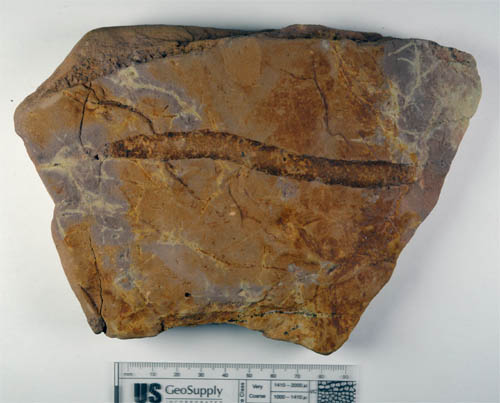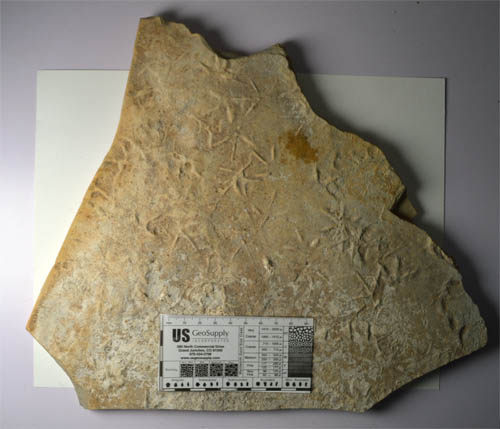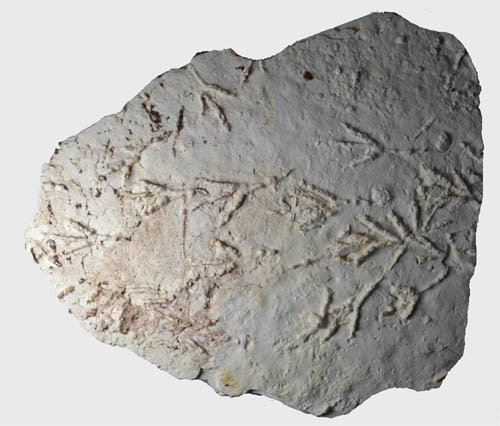Trace Fossils
A Worm Burrow or Maybe Not

This fossil in our museum was found near Big Sandwash Reservoir in Utah.
Identifying fossils is often difficult. The study of trace fossils such as this one is called "ichnology." Although ichnologists (and paleontologists) often sound as though they are relaying facts, listen for words such as probably, possibly, "we think," or "it is likely." The use of these words and phrases, and similar ones, indicate they don't know for sure. That's not a bad thing. They are not being deceptive. We use the same words. The facts are, when studying fossils there is no eye-witness to tell us what it was and what happened. Without an eye-witness we have to make assumptions and draw conclusions based on what the, sometimes very limited, evidence may indicate.
The two main assumptions, used in every case, are that evolution is true and the earth is billions of years old. These assumptions severely constrict what may be considered as possibilities when identifying fossils. What results is that the fossils are identified and characterized based evolutionary assumptions. Then some of those fossils are used as proof evolution is true. Isn't that circular reasoning? Yes, it is!
This fossil was examined by a paleontologist at the Utah Field House of Natural History State Park (Vernal, Utah). It was identified as possibly being the burrow of a worm-like animal, or it may be the impression of a root of a plant. Based on our examination, we conclude that this most likely is the fossil cast of a worm, not a burrow. Why? The surrounding rock is fine-grained sandstone, and that should characterize a burrow. However, under magnification, the fossil is very different from the surrounding sandstone. It has a course surface with a repeating "diamond" pattern.
Based on the assumption evolution happened, impressions of soft bodied worms are extremely unlikely. The worm would decay or be eaten before the slow deposition of sediment could preserve it. Worm burrows, however, already being underground, would be much easier to fossilize. So the evolutionary assumption strongly favors identifying this fossil as a burrow. However, in a global flood scenario, rising flood waters could quickly bury, preserve, and fossilize worms.
Can Trace Fossils Form Under Water?
This is a photo of fossil bird tracks in our museum.

What is interesting about this fossil is that it has raised tracks on one side (pictured above) and impressed tracks from the same type of bird on the other side. This is something we also see with dinosaur tracks. It is an indication that the tracks were preserved by a continuous deposition of sediment, instead of an annual flood... which is the leading theory for how fossil footprints are preserved. However, one of the major objections is that tracks could not be quickly fossilized underwater. This next photo proves they can be.

The above is a photograph from a cast we have in our museum. It was made by Joe Taylor in Crosbyton, Texas. He has retained the original. Joe is the curator of the Mt. Blanco Fossil Museum and is one of the top men in the field of making casts of fossils.
One day Joe noticed birds walking in a mud puddle, leaving tracks in the mud. He wondered if a casting of those tracks could be made, underwater, in the puddle. He sprinkled a casting material over the surface of the puddle, simulating slowly settling sediment. It hardened underwater, resulting in the tracks you see in the above photo. Can footprints fossilize underwater? The answer is, "Yes, they can."
Continue the Tour